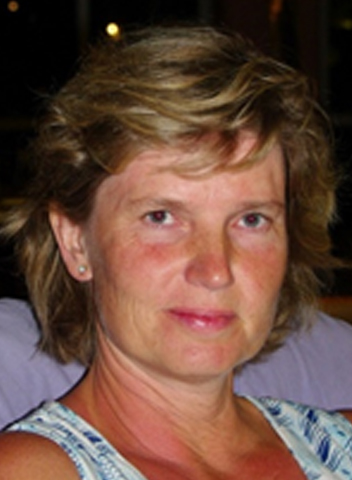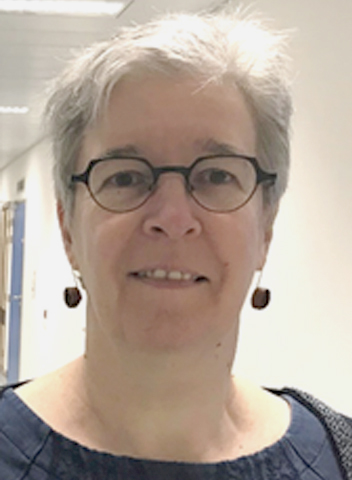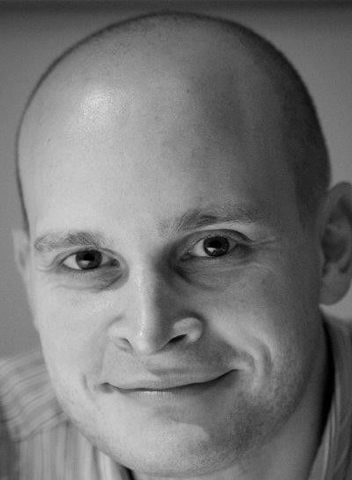Basic research Grant
The prize is awarded to non-commercial projects for basic research in the field of cardiovascular pathology.
This research encompasses scientific disciplines such as biochemistry, physiology, and pharmacology and their interplay, and involves laboratory studies with cell cultures, animal studies or physiological experiments.
Patients are not in the centre of the study but biological samples (e.g. blood) can be used for this purpose.
2025 – Mandy Grootaert, UCLouvain
Study of the role of RGS5 in mural cell phenotypic switching, cell senescence and coronary microvascular dysfunction in 3D
2025 – Aernout Luttun, KU Leuven
Identifying druggable targets downstream of atheroprotective factor PRDM16 for treatment of ischemic disease
2025 - Sven Van Laer, University of Antwerp
Study of the protective role of mitral valve regurgitation on the thrombotic risk in nonrheumatic atrial fibrillation: an experimental porcine research model
2024 Bert Callewaert - UGent
Characterizing the spatiotemporal transcriptional landscape of neural crest cell lineages in a zebrafish model for Myhre syndrome
In Myhre syndrome (MYHRS), cognitive deficiency, congenital heart disease, and impaired ocular and gastrointestinal development identified neural crest involvement in the pathogenesis. MYHRS results from gain-of-function variants (PV) in SMAD4, that disrupt transforming growth factor β and bone morphogenic protein signaling. We use a zebrafish model for MYHRS to understand how abnormal neural crest cell migration and differentiation cause cardiovascular manifestations in Myhre syndrome.
2024 Seyedehsamaneh Ekhteraeitousi - KU Leuven
Deciphering Molecular Pathways of Hypoxia Sensitivity in Adult Cardiomyocytes: An Integrative Cross-Species Investigation
Adult cardiomyocytes are sensitive to oxygen changes, leading to cell death and heart issues. In contrast, fetal cardiomyocytes resist low oxygen, using glycolysis. After birth, they switch to glycolysis and fatty acid oxidation but lose hypoxia tolerance regulated by HIF. The research seeks to understand these changes and find genes to prevent cardiomyocyte necrosis and maintain energy production, advancing heart disease treatment and personalized medicine.
2024 Ilse Luyckx - UAntwerpen
Identification of cell-specific disease genes for bicuspid aortic valve-related aortopathy by transcriptome-wide spatial profiling of a representative Smad6 mutant mouse model
In this project, I aim to improve the molecular basis of bicuspid aortic valve-related aortopathy by identifying early cell-specific disease genes in a representative Smad6 mutant mouse model using transcriptome-wide spatial profiling on embryonic tissue. With SMAD6 being the most common mutated gene, I will tackle our current gap in knowledge on the pathogenic basis underlying this disease in order to advance patient management.
2023 Patrick Sips – Ghent University
Exploring the cell-specific mechanisms of aortic disease using fibrillin-1 mutant mouse models
Marfan syndrome is caused by pathogenic variants in fibrillin-1, and is associated with aortic wall damage. We use fibrillin-1 mutant mouse models to study the mechanisms leading to aortic disease. Using single-nuclear RNA sequencing and immunohistochemical staining we plan to identify changes in aortic cell populations in these models. We will also investigate cell type-specific molecular mechanisms. Our results are likely to lead to improved diagnosis and treatment options for aortic disease.
2023 Didier Communi – ULB
Role of adiponectin and PD-L1 in the release of cardioprotective exosomes
We have shown that mice deficient for P2Y4 nucleotide receptor display reduced cardiac inflammation and smaller infarcts than wild type mice in the left anterior descending coronary artery ligation model. The present project aims to characterize cardioprotective plasma exosomes in these mice. We will investigate the sources of these exosomes and their ability to induce leukocyte polarization. Human P2Y4 polymorphisms potentially related to cardioprotection will also be studied.
2023 Laurent Bultot – UCLouvain
Study of the molecular mechanisms linking protein acetylation and diabetic cardiomyopathy development
Diabetes is a growing epidemic affecting a large part of the population and is a significant public health challenge. In addition to vascular defects, diabetic patients develop a particular form of heart disease called diabetic cardiomyopathy. Our laboratory has demonstrated that protein acetylation is crucial in the early stage of the disease. Our project aimed to deeply comprehend the molecular mechanisms linking protein acetylation and the onset of diabetic cardiomyopathy.
2023 Alice Marino – UCLouvain
Myo-inositol/SMIT1 axis: a novel pathway to prevent of treat heart failure
Growing body of evidence associate changes in cardiac metabolism to the pathogenesis and progression of heart failure. Plasmatic myo-inositol is high in patients with failing hearts, suggesting that it may participate in heart failure development. Myo-inositol transporter SMIT1 is expressed in cardiac fibroblasts and cardiomyocytes. Our hypothesis is that myoinositol/SMIT1 axis favor hypertrophy and fibrosis, thus we aim to establish its impact on left ventricular remodeling and heart failure.
2022 Luttun Aernout – KU Leuven
Study of the cellular and molecular mechanisms underlying cardiomyopathy caused by transcription factor PR domain containing 16 (Prdm16) deficiency in cardiomyocytes and non-cardiomyocyte cell types
2021 Jolanda Van Hengel - UGent
Generation and characterization of three novel induced pluripotent stem cell-derived cardiomyocyte lines as a model to study the pathophysiological mechanisms of arrhythmogenic cardiomyopathy
Arrhythmogenic cardiomyopathy (ACM) is a genetically inherited disease characterized by progressive cardiomyocyte loss and fibro-fatty replacement of the ventricular myocardium. ACM is mostly caused by mutations in genes encoding proteins of the intercalated disc, with PKP2, DSG2, and DSP, encoding for plakophilin-2, desmoglein-2, and desmoplakin, respectively, being most frequently mutated.
Arrhythmogenic cardiomyopathy classically manifests as ventricular arrhythmias and loss of heart muscle cells, which is often the first clinical manifestation of the disease, and are an indication for cardiac transplantation. The heterogeneous landscape of ACM pathogenesis complicates the search for effective therapeutic options. To this day, the molecular mechanisms underlying this disease remain poorly understood and characterized, even for patients with an identified mutation. Our ultimate aim is to gain a better understanding of the molecular mechanisms, by further exploring the microRNA dysregulation, as previously observed in ACM models and patients.
As a first part of the project, we are generating three human induced pluripotent stem cell (hiPSC) lines, which will be derived from ACM patient urine samples. These hiPSC lines will harbor a mutation in DSG2, DSP and CTNNA3 (the latter encoding for αT-catenin). An isogenic control line carrying the corrected gene will be generated for each hiPSC line using CRISPR/Cas9. After differentiation, the resulting induced pluripotent stem cell-derived cardiomyocytes (iPS-CMs) will be characterized on electrophysiological, molecular and ultrastructural level. We will focus on morphology and function and analyse the effect of stress on iPS-CMs by mechanical means.
In order to study the pathogenic mechanisms of ACM, RNA sequencing will be performed to profile gene expression in the different ACM and control cardiomyocytes in basal and stressed conditions. We hypothesize that different genetic mutations can lead to a specific miRNA expression pattern, resulting in altered modulation of signaling pathways. Comparing differentially expressed genes and miRNA levels between different ACM lines and their respective control lines will allow us to further refine the genotype-phenotype correlation within the broad ACM spectrum. This may enable more tailored miRNA-based strategies than currently available for the diagnosis and treatment of ACM patients.

Jolanda Van Hengel
2020 An Zwijsen - KU Leuven
Contribution of BMP-SMAD regulated biogenesis of microRNAs in organ-specific functions of lymphatic endothelium
A major function of the lymphatic system is to drain tissue fluid and maintain fluid homeostasis. A dysfunctional lymphatic vasculature is associated with development of several diseases, including lymphedema or tissue swelling. Lymphedema predisposes amongst others for atherosclerosis and exacerbates various cardiovascular diseases. Worldwide approximately 250 million people suffer from this disease. Despite the considerable public health significance, no real cure exists for lymphedema, only symptom-controlling physical therapy. In this project, we will study the BMP signalling pathway, a pathway that has recently emerged to co-regulate lymphatic vessel development and stability. We will make use of human lymphatic endothelial cell culture systems, a mouse lymphedema model and patient material. Understanding how differences between various organ-specific lymphatic beds are established and the response of these organ-specific vessels to environmental changes is essential to identify mechanisms underlying lymphatic vessel restricted diseases and to design improved therapeutic treatments.

An Zwijsen
2019 Maaike Alaerts – UZ Antwerp
Promising novel approach to Brugada syndrome research: identification of genetic modifiers using genome and transcriptome analysis in induced pluripotent stem cell-derived cardiomyocyte model
2018 Peter Kayaert – UZ Gent
Patiënten bij wie een onderzoek van de kroonslagaders aangeraden wordt, blijken in bijna één op de tien gevallen een vernauwing te hebben van de oorsprong van de linker kroonslagader, de zogenaamde hoofdstam. De linker kroonslagader zorgt voor meer dan vier vijfde van de bloedtoevoer van het hart. De rechter kroonslagader is verantwoordelijk voor de rest.
Door een ernstige vernauwing van de hoofdstam heeft een groot deel van het hart te weinig bloed en bijgevolg ook te weinig zuurstof. Het bloed transporteert namelijk zuurstof. In dat geval is een overbruggingsoperatie aangewezen of kan de vernauwing weg gehaald worden door een stent, een metalen veertje, erin te plaatsen. Maar dergelijke ingrepen brengen ook een zeker risico op verwikkelingen met zich mee, al is het risico meestal niet heel hoog en weegt het niet op tegen het risico van er niets aan te doen. De vernauwing van de hoofdstam vaststellen, heeft dus belangrijke implicaties voor de patiënt.
De laatste jaren is gebleken dat het vaak niet gemakkelijk is voor de hartspecialist om met zekerheid te zeggen dat de vernauwing van de hoofdstam ernstig genoeg is om zuurstoftekort te veroorzaken in het hart. Beeldvorming van de kroonslagaders kan immers soms misleidend zijn. Door enkel naar het uitzicht van de vernauwing te kijken, kan men de ernst van vernauwingen soms onder- of overschatten. Een hele lange vernauwing die op het eerste zicht niet zo ernstig lijkt, kan de bloedtoevoer toch ernstig verstoren. Een korte, op het eerste zicht ernstige vernauwing, verstoort daarnaast de bloedtoevoer soms niet zo veel als gedacht. Daarnaast weten we ook dat de hele kleine bloedvaatjes in ons hart, die we niet kunnen zien met beeldvorming, soms de vernauwing in de grotere bloedvaten kunnen compenseren door goed uit te zetten.
Bij twijfel over de ernst van een vernauwing kunnen we nu bijkomende technieken gebruiken om te meten of de bloedtoevoer onvoldoende is. Dit doen we door tijdens een zogenaamde coronarografie (een hartkatheterisatie waarbij we kleurstof inspuiten in de kroonslagaders) een fijn draadje in de kroonslagaders in te brengen. In dat draadje is een heel kleine bloeddrukmeter ingebouwd. Wanneer we met het draadje doorheen de vernauwing gaan en vaststellen dat de bloeddruk sterk daalt voorbij de vernauwing, dan is de bloedtoevoer onvoldoende en is het meestal aangewezen een ingreep uit te voeren.
Deze techniek wordt ondertussen dagelijks toegepast in gespecialiseerde hartcentra over de hele wereld. Ook wanneer een vernauwing in de hoofdstam wordt vastgesteld, wordt de techniek gebruikt. Toch is het zo dat bij dergelijke vernauwingen sommige artsen zich nog laten leiden door de beeldvorming alleen. In de meeste studies met deze speciale meettechnieken, werden immers geen of weinig patiënten met een hoofdstamvernauwing opgenomen. Dit omdat deze mensen traditioneel al snel verwezen werden voor een overbruggingsoperatie. Deze technieken zijn echter even waardevol bij de evaluatie van hoofdstamvernauwingen. Meer nog, alles wijst erop dat ze onnodige ingrepen kunnen voorkomen.
Om meer bewijs te verkrijgen, hebben we de PHYNAL studie (Prospective Left Main Physiology Registry) ontworpen. Deze studie gaat de patiënten volgen die een onderzoek van de kroonslagaders hebben ondergaan bij een hartspecialist die deze meettechnieken in zijn dagelijkse praktijk gebruikt. De bedoeling is om na te gaan hoe de mensen het op langere termijn stellen, nadat ze voor hun vernauwing in de hoofdstam een ingreep hebben ondergaan. Of hoe mensen het stellen die geen ingreep nodig bleken te hebben, op basis van de metingen. Bij de mensen die geen ingreep nodig hadden, kijken we ook naar de verdere evolutie van de ziekte in de kroonslagaders voor een eventuele toename van vernauwing of nieuwe vernauwingen. We gaan na of de verrichtte metingen deze evolutie kunnen voorspellen.

Peter Kayaert